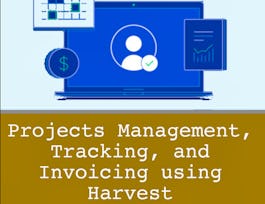With the world's first MOOOOO-C, you will gain a broad and comprehensive understanding of all aspects of dairy management such as genetics, nutrition, reproduction, animal health, farm economics, and sustainability of dairy production systems. There's something here for everyone whether you are just looking for the basics or have years of experience in the dairy industry.
This is an eight-week course. Each week consists of four to nine video lectures, additional reading materials, and a multiple-choice questions quiz. Estimated study time is between three and five hours per week. Learners have the option to purchase a Course Certificate for 49.00 USD. The certificate can be purchased at any time, but you must verify your identify before taking the course quizzes in order to be eligible. For those who cannot afford the certificate fee, financial aid is available through Coursera. Why is producing milk efficiently and sustainably so important? Milk provides humans with over 16 essential nutrients, such as: Energy, Protein and Essential Amino acids, Vitamin A, Vitamin D, several B vitamins, including B12, Pantothenic and Folic acids, and essential minerals such as Calcium, Magnesium, Phosphorus, Potassium, Zinc, as well as other minerals. Did you know that one glass of milk provides a 5-year old child with 21% of his/her daily protein requirements and 8% of their energy needs? Most milk in the world, about 85%, is produced from cattle. However, water buffaloes, goats, sheep, and camel are also dairy animals. The United States, India, the European Union, Brazil, and New Zealand are among the largest dairy producers in the world. Yet among these dairy-producing countries there are varied methods to generate milk with highly variable productivity and efficiency. Dairy production is vital for the survival of billions of people. Globally, around 150 million small-scale dairy households, equivalent to 750 million people, are engaged in milk production. The number and size of dairy farms varies among countries, but in India alone, there are estimated 78 million dairy farms! In the United States, one of the leading milk-producing countries in the world, total milk production has been steadily increasing in the last decades, reaching over 205 billion pounds (93 billion kilograms) in 2014. This was accompanied by a steady increase in average milk yield per cow, reaching 22,260 lb (over 10,100 kg) per lactation in 2014. How has this efficiency been achieved? What methods are necessary to ensure production of high quality milk? How do we balance milk production efficiency with animal health and environmental protection? This course will provide the student with information to better understand dairy production systems and their role in feeding the world population. In this MOOOOO-C, you will learn about the dairy enterprise from internationally recognized dairy science professors who have delivered highly regarded dairy education programs within the United States and internationally. Course lectures are translated into Portuguese and Chinese; PDF files of these translations can be found under each course week. The Dairy MOOC team thanks Dr. Antonio Branco (Universidade Estadual de Maringá, Brazil) and Ms. Yuanyuan Zhang (Pennsylvania State University) for translating the lecture materials. Course Sponsors This course was supported by the generous contributions of Innovation Center for US Dairy at Silver Level and Pancosma North America, RP Nutrients, Inc. and Arm and Hammer, which provided funding support at a Bronze Level. The Pennsylvania State University has final responsibility for the academic content of this course.




























